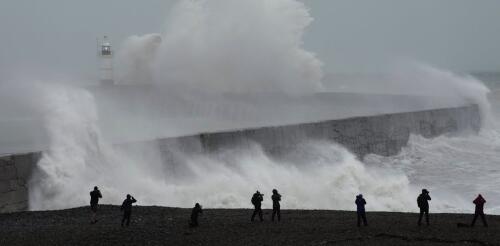Climate change
Global heat has seared to new extremes in recent months, and devastating climate disasters are providing powerful reminders of the costs of climate change, as governments around the world prepare for the 2023 United Nations climate summit that starts on Nov. 30. While a small window of hope remains for meeting the goals of the 2015 Paris climate agreement, the world’s greenhouse gas emissions continue to rise. This year’s climate summit, COP28, needs to be transformative. What will it take to harness a spirit of international cooperation in today’s complex, divisive and volatile world abounding in self-interest? As a former senior U.N. official, I worked for years in multilateral consensus building among often hugely divergent parties. Here are some of the challenges and negotiating techniques I expect to see as representatives from countries around the world come together in Dubai. The challenge of national self-interest To slow climate change, the world m...
When this year’s United Nations Climate Change Conference begins in late November 2023, it will be a moment for course correction. Seven years ago, nearly every country worldwide signed onto the Paris climate agreement. They agreed to goals of limiting global warming – including key targets to be met by 2030, seven years from now. A primary aim of this year’s conference, known as COP28, is to evaluate countries’ progress halfway to the 2030 deadlines. Reports show that the world isn’t on track. At the same time, energy security concerns and disputes over how to compensate countries for loss and damage from climate change are making agreements on cutting emissions tougher to reach. But as energy and environmental policy researchers, we also see signs of progress. Global stocktake raises alarms A cornerstone of COP28 is the conclusion of the global stocktake, a review underway of the world’s efforts to address climate change. It is designed...
Climate change is threatening the survival of plants and animals around the globe as temperatures rise and habitats change. Some species have been able to meet the challenge with rapid evolutionary adaptation and other changes in behavior or physiology. Dark-colored dragonflies are getting paler in order to reduce the amount of heat they absorb from the sun. Mustard plants are flowering earlier to take advantage of earlier snowmelt. Lizards are becoming more cold-tolerant to handle the extreme variability of our new climate. However, scientific studies show that climate change is occurring much faster than species are changing. Zebrafish have evolved to thrive in water a degree or so warmer than normal, but they struggle to survive at higher temperatures. isoft/E+ Getty Images What is evolutionary adaptation? The word “adaptation” is used in many ways by climate scientists, but it has a...
The annual United Nations Climate Change Conference, better known as COP, that starts Nov. 30 in the United Arab Emirates will bring together governments, businesses, international organizations and NGOs to shine a spotlight on the climate emergency the world faces and consider solutions to the crisis. The alarming rates at which we are losing species is not just a tragedy of epic proportions – the destruction of biodiversity also robs humanity of one of its strongest defenses against climate change. Retaining the earth’s diverse mix of animals and plants is crucial for the planet’s future, yet any plan to halt its loss must grapple with the reality that not every species can be saved from extinction because of the limited resources we have for biodiversity conservation. By one estimate, about US$598 billion to $824 billion is needed annually to reverse the loss of species worldwide. Different ways of posing the problem Given finite research and practical res...
As oceans waves rise and fall, they apply forces to the sea floor below and generate seismic waves. These seismic waves are so powerful and widespread that they show up as a steady thrum on seismographs, the same instruments used to monitor and study earthquakes. That wave signal has been getting more intense in recent decades, reflecting increasingly stormy seas and higher ocean swell. In a new study in the journal Nature Communications, colleagues and I tracked that increase around the world over the past four decades. These global data, along with other ocean, satellite and regional seismic studies, show a decadeslong increase in wave energy that coincides with increasing storminess attributed to rising global temperatures. What seismology has to do with ocean waves Global seismographic networks are best known for monitoring and studying earthquakes and for allowing scientists to create images of the planet’s deep interior. These highly sensitive instruments continu...




